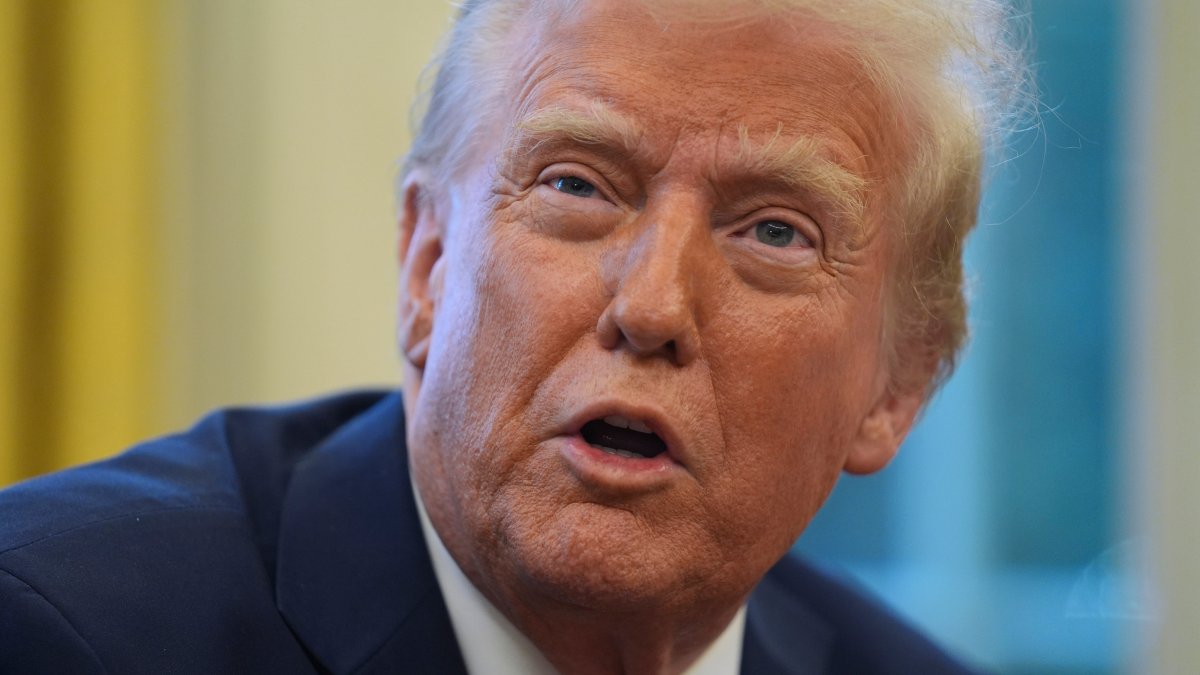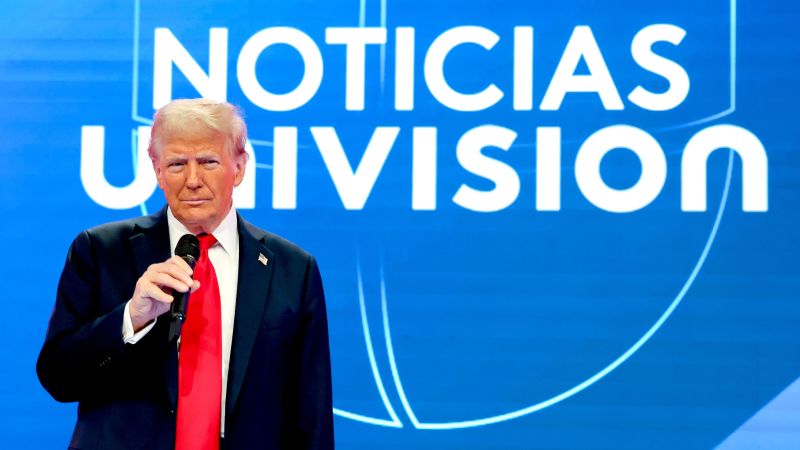Since taking office in January, the Trump administration has notched a run of wins at the Supreme Court, which has overturned or stayed multiple lower-court rulings. These emergency rulings, typically brief, unsigned orders, have served to greatly expand the power of the presidency and remove constraints on the executive branch.
Now, as the Supreme Court begins a new term on Monday, the legal basis of these rulings is facing fresh scrutiny. The nine justices, of whom three were appointed in President Donald Trump’s first term, must issue conclusive, reasoned rulings on some of Mr. Trump’s most controversial policies, from emergency tariffs to birthright citizenship and immigration enforcement. The stakes are high for the administration, the contours of U.S. democracy, and for the court itself, which faces searing questions about its political tilt and institutional integrity.
If the emergency docket was a pit stop, the 2025-26 term is when the rubber meets the road.
Why We Wrote This
Since President Donald Trump returned to office in January, the Supreme Court has granted his administration an unprecedented 30 emergency docket rulings. With the new term opening Monday, the justices must now begin to explain the legal reasoning behind their decisions.
“This is an administration in a hurry. It tries to push all obstacles out of its way,” says Joseph Kobylka, a political scientist at Southern Methodist University. He adds, “This is an administration that is incredibly aggressive about advancing executive power.”
The nation’s highest court will be in the spotlight in an era of rising polarization and distrust. More than half of Americans disapprove of how the Supreme Court does its job, according to Gallup, with a 65-point gap between how Republicans and Democrats view the conservative-dominated court. (Gallup found 43% of those it polled in September see the body as “too conservative.”)
Perhaps the biggest question of all is how an unpopular court would muster its own legitimacy to stand up to the president, if his actions were unlawful. And if it does, would it risk seeing its rulings ignored or sidestepped, potentially upending the rule of law it is tasked to uphold?
“The court is terrified of having a head-on confrontation with the executive branch and making an order that the president won’t follow,” says Dan Farbman, an associate professor of constitutional law at Boston College. “What we’re going to see is a balance between the court’s institutional power, how much power it feels like it has, how many powers it’s willing to exert, and [its] legal reasoning.”
There have already been reported instances of noncompliance by the administration with federal court orders, notes Aziz Huq, a law professor at the University of Chicago. This implicitly puts pressure on the Supreme Court not to confront the executive, since officials are suggesting they are willing to defy rulings that go against them, he says. But this political pressure makes it all the more important to impose lawful constraints – and to see that they are carried out.
“A world in which the executive threatens something and the court accedes regardless of the legality of the thing in question is just as bad as a world in which the executive doesn’t obey court orders,” says Professor Huq, who teaches constitutional law.
There are different views on whether people should trust the court intrinsically. Some people believe the court should be viewed as legitimate, regardless of its decisions, and others think the court is legitimate only when they agree with rulings, says Professor Huq.
The Supreme Court was viewed “with a large measure of distrust” by state courts before the Civil War, he says. “An interesting contrast today is you have this rumbling distrust coming not from state courts … but from lower court judges.”
Examining the court’s legitimacy as a legislative check shouldn’t be conflated with whether its decisions are viewed as right or wrong politically, says Thomas Berry, director of the Cato Institute’s Center for Constitutional Studies. “Even the justices shouldn’t like the policy outcome of every case they’re deciding, because legal questions are often different from policy questions.”
What is Humphrey’s Executor and why does it matter?
Among the politically charged cases on the docket for this term, which runs through next June, are the firings of commissioners at independent federal agencies. The administration argues that these agencies are part of the executive branch and that board members serve as the president’s pleasure. A 1935 Supreme Court ruling, Humphrey’s Executor v. United States, has held that appointees can only be removed for malfeasance and neglect of duty.
Conservative justices have said, however, that this precedent should be revisited. Judicial activists on the right have long sought to defang agencies that they view as overly independent and duplicative in ways that have exacerbated federal government bloat.
“You have a majority of the Supreme Court that pretty clearly disagrees with Humphrey’s Executor but has not yet overruled it,” says Mr. Berry.
The Trump administration has fired senior officials at several independent agencies. One, Rebecca Slaughter, an appointee at the Federal Trade Commission, successfully sued against her removal; her case, which was upheld on appeal, has been accepted by the Court. (Two other board members of independent agencies have asked for their firings to be reviewed.)
A separate employment case concerns Lisa Cook, a governor at the Federal Reserve, whom Mr. Trump tried to fire over allegations of improper mortgage documentation. After she sued, a lower court ruled that she should stay in her position; the Trump administration wants the Court to overturn that decision. Analysts say the Supreme Court may be less inclined to lessen the Federal Reserve’s independence, given its stature as a linchpin in the U.S. economy. (Ms. Cook remains in her post; the Court will hold hearings in January.)
Are President Trump’s tariffs constitutional?
Another case with broad economic consequences concerns the constitutionality of Mr. Trump’s tariffs. Most of the tariffs imposed on foreign-made goods since January have been under a 1977 Act of Congress that had never been used for this purpose. The White House argues that its declaration of a national emergency under the act allows it to impose global tariffs.
“It’s hard to argue that this isn’t the most important case of the term,” says Mr. Berry. (Cato has filed amicus curiae briefs in federal court contesting the tariffs.)
How the Supreme Court decides the tariffs case, which lower courts have found unlawful, will have practical as well as constitutional implications. Importers have already paid hundreds of billions of dollars to the government that they would seek to recoup if the emergency tariffs are struck down, potentially widening the federal deficit. Administration officials have said they would find other ways to impose tariffs if they lose the case which will be heard in November.
Michael McConnell, a former appeals court judge appointed by President George W. Bush, has compared the tariffs case with a 1952 ruling, Youngstown Sheet & Tube Company. In that case, the Supreme Court ruled that President Harry Truman couldn’t take control of steel mills to supply armaments for the Korean War. It laid down the principle, Mr. McConnell wrote in a New York Times op-ed, that “even in an emergency, the president cannot take upon himself powers that are granted neither by the Constitution nor by congressional statute.”
If the Trump tariffs are upheld, it would, by contrast, “be a major step toward a presidency that does whatever the president wishes to do,” wrote Professor McConnell, who directs the Constitutional Law Center at Stanford University.
What will happen with birthright citizenship?
Perhaps the most controversial, and to many legal scholars the most tendentious, case involves the administration’s efforts to end birthright citizenship. The 14th Amendment, adopted in 1868, states that all persons “born or naturalized in the United States, and subject to the jurisdiction thereof, are citizens of the United States and of the State wherein they reside.”
In a Jan. 20 executive order, Mr. Trump ordered that children born in the U.S. not automatically qualify for citizenship if their parents are in the country illegally or temporarily. A flurry of lawsuits followed, resulting in nationwide court injunctions against the order. In June, the Supreme Court struck down the use of nationwide injunctions, but didn’t rule on the constitutionality of ending birthright citizenship. The justices, however, left the door open to a class action suit, which the American Civil Liberties Union filed. Multiple judges subsequently blocked the executive order from taking effect. Last week, the Trump administration asked the court to rule on the merits of its interpretation of the 14th Amendment.
The court ruling on court injunctions was a technical parsing of law that sidestepped the political minefield of who is and isn’t a citizen. But if the court does, as expected, take up the birthright case, it would be a stiff test of the porous divide between law and politics, say legal scholars.
“The court takes great pains, and Chief Justice Roberts has tried to do this in his opinions and public statements, to say the court is not a political entity but a legal entity,” says Professor Kobylka. Its institutional legitimacy rests, in part, on the idea that it’s above politics. But that idea is increasingly challenged both by its partisan tilt and rising public skepticism.
The unprecedented use of the emergency docket by this administration – 30 grants of emergency relief so far – has ratcheted up this tension, says Professor Huq.
In one such emergency ruling, the Supreme Court recently overturned a California district court ruling that the U.S. Immigration and Customs Enforcement had unlawfully used racial profiling in its dragnet for unauthorized immigrants. In another ruling in July, the justices allowed the administration to proceed with mass firings of federal workers.
The Supreme Court has sided with the Trump administration about 80% of the time, according to a study by professors at Washington University and Penn State. By contrast, in the lower federal courts, “you have a mix ideologically of Republicans and Democrats deciding against Trump in about 95% of cases,” says Professor Huq.
Conservatives argue that federal justices in blue states, where many lawsuits are filed, are overreaching by obstructing the Trump administration. Josh Blackman, a professor at South Texas College of Law, has called this a “failed lower court revolt” that threatens the judicial order. He noted that Mr. Trump also faced pushback in his first term from lower-court judges.
“As soon as Trump began his second term, federal judges resumed their skepticism of everything Trump does. But what’s different this time is that the Boston [Brahmin] of the judiciary, determined to save the rule of law, are pushing back against the Supreme Court itself,” wrote Professor Blackman, who serves on a Trump-appointed advisory board on religious liberty.
Other scholars say these cases result from confusion, not defiance: Emergency rulings by the court that overturn federal court decisions, for example, on the removal of agency officials, without formally overturning the 1935 precedent, leave lower-court judges unsure how to apply the law.
Full hearings, followed by formal rulings that supersede the shadow docket, would end this dilemma while also pitching the Supreme Court into the political arena, where it prefers not be.
“Right now, the court’s been able to sort of give the administration a break without having to fully defend itself, to defend its reasons. But when it finally decides these cases, it has to actually write up the reasons for what they’re doing. And that could mean big changes in constitutional law, or it could mean a confrontation with the president,” says Professor Farbman.
Source link





